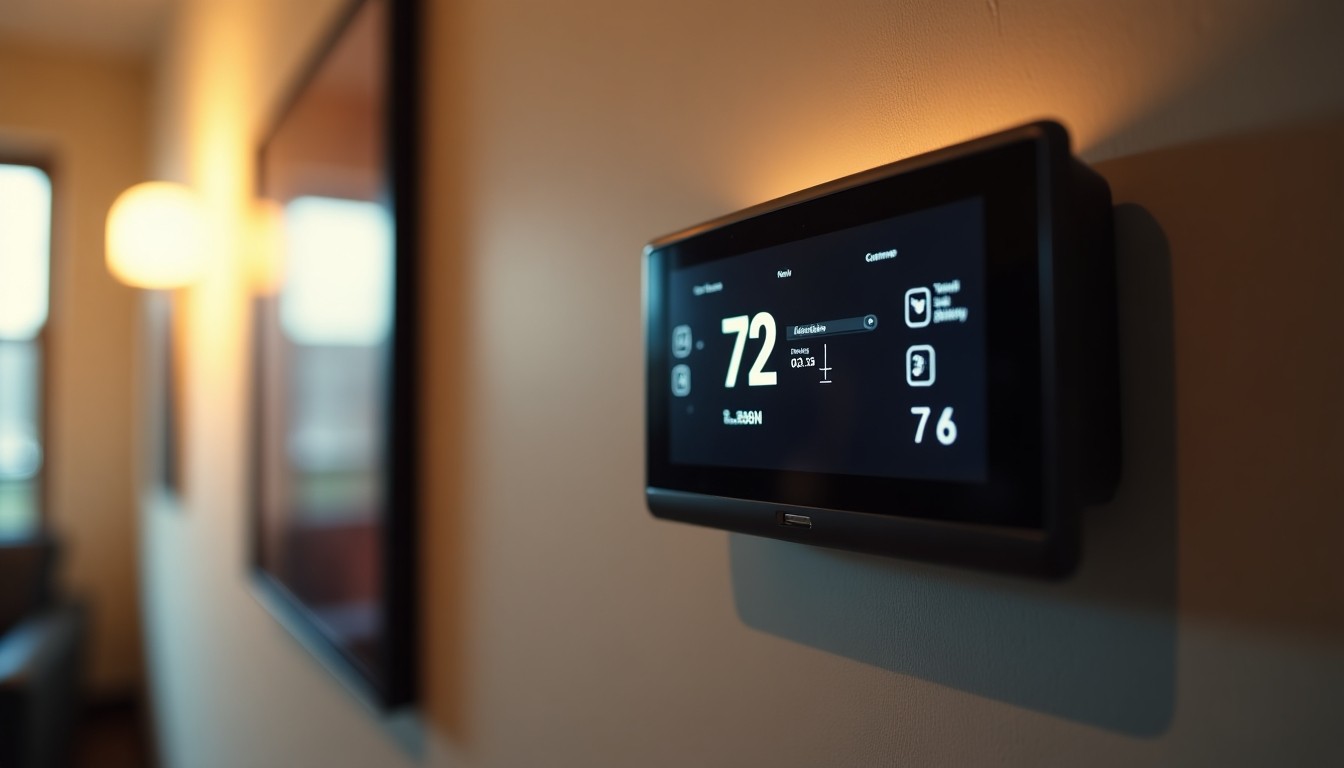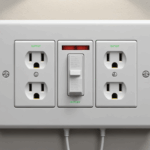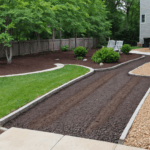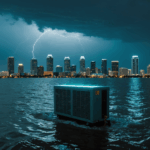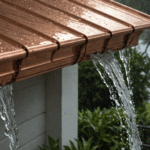When dealing with HVAC issues, thermostat malfunctions often top the list of common problems homeowners face. A malfunctioning thermostat can result in inefficiencies in both heating and cooling, leading to uncomfortable temperatures and increased energy bills. Understanding and troubleshooting these malfunctions is crucial for maintaining an effective HVAC system.
One prevalent issue is when the thermostat displays inaccurate temperatures. This can be a result of poor placement. If the thermostat is located in direct sunlight or near an air vent, it may give false readings, causing the HVAC system to either overheat or overcool the space. To mitigate this, consider relocating the thermostat to an interior wall away from heat sources and drafts, ensuring it measures the true ambient temperature.
An unresponsive thermostat is another common problem. This may be due to dead batteries, a need for recalibration, or even a more serious wiring issue. For non-digital thermostats, recalibrating it according to the manufacturer’s instructions might be necessary. If the thermostat uses batteries, replacing them might solve the issue. However, if these steps do not resolve the problem, it is advisable to consult an HVAC repair professional to examine the wiring and internal components.
Programmed settings can also cause operating discrepancies. A thermostat that has been improperly set might cause unexpected behavior such as activating the HVAC system at odd hours. Reviewing and adjusting the programmable sections is essential for optimal functionality. Ensuring the correct settings, such as adjusting for seasonal changes with appropriate heating and cooling cycles, can improve efficiency significantly.
Here’s a comparison to demonstrate some common thermostat types and potential issues:
| Thermostat Type | Common Issues | Troubleshooting Tips |
| Manual | Inaccurate readings, user error | Relocate away from direct heat or drafts; recalibrate |
| Programmable | Incorrect settings | Review and adjust program settings regularly |
| Smart | Connectivity issues | Ensure Wi-Fi connection and software updates are current |
Modern smart thermostats offer a more advanced approach, with internet connectivity allowing for remote adjustments via smartphones. However, they can present connectivity issues, meaning the device can’t communicate effectively with the HVAC system. Users should ensure a strong Wi-Fi connection and keep software updated to avoid such problems.
Effectively troubleshooting thermostat malfunctions can prevent unnecessary stress and expense. By addressing simple issues like battery replacement, recalibration, or misplaced devices, homeowners can often save on the cost of professional HVAC repair while ensuring greater comfort and efficiency.
refrigerant leaks
Refrigerant leaks are a significant concern in HVAC systems as they can severely compromise the system’s efficiency, leading to increased energy consumption and insufficient heating and cooling. Identifying and fixing these leaks promptly is crucial to maintaining a healthy and functioning HVAC system.
Signs of refrigerant leaks include a noticeable decrease in cooling efficiency, hissing or bubbling noises, ice buildup on the evaporator coils, and higher energy bills despite no changes in usage. Here’s a step-by-step guide on how to address refrigerant leaks:
- Identify the Leak: Start by turning off the HVAC system. Use a leak detector, a type of device specifically designed to sense refrigerant. Common places for leaks include the evaporator coil, condenser coil, and refrigerant lines.
- Inspect Visual Indicators: Look for oily residue and listen for hissing sounds, which might indicate a leak point. If the evaporator coil is present with frost or ice, it could be a sign of leakage in that area.
- Consult a Professional: Unlike tasks like unclogging air filters that may be manageable by homeowners, addressing refrigerant leaks generally requires the expertise of an HVAC repair technician. This is due to the handling of refrigerant, which is a regulated substance under federal law, mandating proper containment and disposal.
- Repair or Replace Components: After the HVAC professional locates the leak, they may need to repair or replace damaged components such as the coil or lines. Sealants are rarely a long-term solution and usually not recommended by professionals, as they could lead to further damages or reduced system performance.
- Recharge the System: Once the leak is repaired, the system must be properly recharged with refrigerant. It is essential to use the correct type and amount of refrigerant specified by the manufacturer. Overcharging or undercharging the refrigerant can further harm system efficiency and lead to additional issues.
- Conduct a System Test: After repairs and recharging, a thorough system test should be conducted to ensure that everything is operating as expected. This includes checking for accurate temperature regulation and listening for any unusual noises that might indicate other underlying issues.
- Schedule Regular Maintenance: Prevent future leaks by scheduling routine maintenance checks with a certified HVAC technician. This will help ensure the system remains in optimal working condition and can detect early signs of potential problems.
Troubleshooting refrigerant leaks proactively is not only crucial for the effectiveness of the HVAC system but also for environmental reasons, as leaking refrigerant can contribute to ozone depletion. By addressing these issues timely, homeowners can extend the lifespan of their heating and cooling systems, ensuring comfortable living environments and potentially saving money on energy costs.
clogged air filters
One of the most common yet easily addressed HVAC issues is clogged air filters. Air filters play a crucial role in maintaining the efficiency and longevity of your heating and cooling system by trapping dust, pollen, and other airborne particles, thus preventing them from circulating throughout your home. When these filters become clogged, it hinders the airflow and significantly reduces the system’s efficiency.
A primary indicator of a clogged air filter is reduced air flow from the vents, making it difficult for rooms to reach the desired temperature. Additionally, if you notice an increase in your energy bills without any change in your typical usage patterns, it could be a sign that your HVAC system is working harder due to restricted airflow, a direct result of a dirty filter.
Regular replacement of air filters is essential for maintaining an efficient HVAC system. Depending on your specific system and usage, filters should be checked and potentially replaced every 1-3 months. Homes with pets or high levels of dust might require more frequent changes. Replacing a clogged filter is a straightforward task that most homeowners can manage without the need for professional HVAC repair services. Simply locate the return air duct, remove the old filter, and insert a new one that matches the size and specifications of the old filter.
In addition to improving airflow and system efficiency, a clean air filter contributes significantly to air quality within your home. This is particularly crucial for households with individuals who have allergies or respiratory issues, as it ensures that the air circulating is free from harmful particles that might exacerbate health issues.
Clogged filters can also contribute to other HVAC problems. For instance, restricted airflow can cause the system to overheat, potentially leading to costly repairs or a shortened lifespan for the equipment. Furthermore, it might cause ice buildup on the evaporator coils due to improper cooling, which can subsequently lead to refrigerant leaks and necessitate professional troubleshooting.
Overall, maintaining clean air filters not only enhances system performance and lowers energy bills but also promotes a healthier indoor environment. It’s a simple and cost-effective maintenance task that can prevent more serious HVAC issues in the future. Proactive management of air filters is a significant step toward extending the life of your heating and cooling system and ensuring reliable and efficient operation year-round.
drainage issues
Drainage issues in HVAC systems typically arise within the condensate lines, which are responsible for removing moisture that accumulates as your air conditioning system cools the air. A blocked or leaking condensate line can lead to a number of problems, from water damage around your unit to the possibility of system shutdown due to safety switches often integrated to prevent overflow. Thus, recognizing and troubleshooting drainage issues is essential for maintaining your heating and cooling system’s performance and preventing costly damage.
A common symptom of drainage issues is water pooling around the indoor unit. If you notice this, it’s crucial to act quickly to prevent water damage and potential mold growth. First, turn off your HVAC system to minimize further condensation. Then, inspect the condensate line—often a PVC pipe that leads to a drain. It’s important to check for any visible blockages; debris, dust, and biological growth, such as algae, can obstruct the flow of water through the line.
One effective way to clear a clogged condensate line is to gently vacuum it using a wet/dry vacuum. Ensure all connections are sealed before starting to create sufficient suction to pull out any blockage. Alternatively, a simple solution of distilled vinegar or a mild bleach mixture can be poured through the line, breaking down the growths. Allow the solution to sit for about 30 minutes, then flush the line thoroughly with water.
Sometimes, drainage issues may stem from problems with the condensate pump, especially in systems where gravity is insufficient for water removal. If your HVAC system has a pump, check that it is operational. Ensure that the pump’s power supply is intact and that its float switch is functioning properly. A malfunctioning float switch can prevent the pump from activating, resulting in water buildup.
For consistent system performance, regular maintenance of the condensate line is recommended. Schedule routine inspections as part of a comprehensive HVAC repair and maintenance checklist. This preventive measure can help identify potential problems before they lead to more serious issues. Additionally, ensuring that the drainage line is properly sloped can aid in natural flow, reducing the likelihood of standing water and thereby preventing clogs.
Lastly, keep an eye out for any signs of excessive humidity. High indoor humidity levels not only indicate possible drainage problems but are also detrimental to comfort and can encourage mold and mildew growth. An efficient HVAC system should maintain proper humidity levels, contributing to the overall indoor environment’s comfort and air quality.
Addressing drainage issues promptly is pivotal for both the efficiency and longevity of your HVAC system. By incorporating regular maintenance habits into your home care routine, you can avoid unnecessary HVAC repair costs, minimize the risk of water damage, and ensure your system operates smoothly and effectively throughout the year.
unusual noises
If you hear unusual noises coming from your HVAC system, it’s often an indicator that something isn’t quite right. Ignoring these sounds can lead to more serious and costly HVAC repair issues down the line, so it’s important to determine the cause and take corrective action immediately.
Rattling, banging, or clanking noises often suggest loose components or debris in the system. These sounds can indicate that parts have come loose due to the regular vibrations of the unit, or foreign objects might have entered the ducts. Begin troubleshooting by checking all accessible parts and ducts for any loose components or blockages. Tighten any screws or bolts that may have loosened over time. If you find items like small rocks or twigs in the ducts, carefully remove them to reduce noise and prevent further damage.
Squealing or screeching sounds can be particularly alarming, as they often suggest issues with motor bearings or belts. Worn-out belts or misaligned bearings can result in excessive friction, leading to the screeching sound you hear. Inspect the motor and belt systems carefully; if the belts show signs of wear or have become loose, replace or adjust them according to the manufacturer’s guidelines. In some cases, applying lubrication to the moving parts can alleviate the noise until more comprehensive maintenance can be performed.
A hissing sound generally indicates a refrigerant leak, although it can also be caused by a build-up of air pressure. Hissing sounds warrant immediate action, especially if a refrigerant leak is suspected, as this requires professional HVAC repair. For pressure-related hissing, ensure that the system isn’t overcharged and that airflow paths are unobstructed to maintain safe operating conditions and performance.
Buzzing or humming noises might stem from electrical issues within the system. These sounds could indicate a problem with the fan motor, or they might point to loose wires or faulty electrical connections. Use caution when inspecting the electrical components of your HVAC system. If you suspect electrical issues, it’s best to consult with a professional HVAC technician to avoid electrical hazards and ensure proper repairs.
Persistent unusual noises should never be dismissed, as they often precede more significant heating and cooling issues. Keeping an ear out and identifying these noises early can help prevent extensive and costly repairs. Regular maintenance and inspections significantly reduce the likelihood of these problems and enhance the robustness of your HVAC system.
In your quest for a more comfortable home, staying vigilant about these common HVAC complaints ensures that your system continues to operate smoothly. Prompt troubleshooting, regular HVAC repair and maintenance, and a little prevention go a long way in avoiding most of the complications that arise with heating and cooling systems, leading to long-term efficiency and cost savings.
In conclusion, understanding and addressing common HVAC problems can greatly enhance the efficiency and lifespan of your heating and cooling system. By recognizing the signs and taking timely action, homeowners can reduce the likelihood of expensive repairs and maintain a comfortable indoor environment year-round. A proactive approach to maintenance not only ensures greater reliability and performance but also delivers peace of mind knowing that your HVAC system is in optimal condition.
